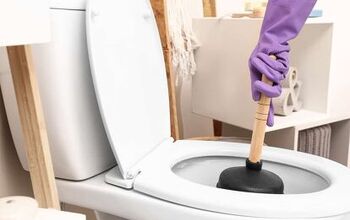How Do I Keep Food Safe To Eat During A Summer Barbeque

Summer is the perfect season to barbeque. There are plenty of holidays at this time of year that lend themselves perfectly to a nice cookout, including July 4th and Father’s Day. The weather is warm, and ideal for outdoor entertaining. While the warm weather is great for enjoying the outdoors, it is also potentially problematic and even unsafe for your food. When you host a summer barbeque in the heat, it’s important to know how to keep your food safe to consume.
When barbecuing this summer, use an accurate thermometer and correctly measure the internal temperature of your grilled meats. To ensure your food is safe to eat, keep food out of the danger zone (below 40 degees for cold food or higher than 140 degrees for hot food). Place your cold foods on ice, or in the refrigerator when people aren’t actively eating. Don’t put all the food out at once, and ensure you store and seal your leftovers properly.
Hosting a summer barbeque is a great way to enjoy the pleasant weather and your outdoor space. There is also a lot of food that just tastes better when you have a cookout. The key is to know at what temperature to grill your foods, and how to serve your side dishes safely. Keep reading to learn the top tips to ensure all the food at your next summer barbeque is safe to eat.
11 Tips To Help Keep Your Food Safe At A Summer Barbeque
1. Use A Reliable Thermometer
To keep your food fresh and at a safe temperature, you need a tool that will accurately measure the temperature of your barbequed delicacies. This means you need a quality and reliable food thermometer.
There are tons of different meat thermometers on the market, and they are a grilling essential. There are old-school manual thermometers, electric ones, and even thermometers that can communicate with your smartphone. Regardless of what type of thermometer you use, ensure that it is taking accurate readings by testing it.
2. Know Where And How To Take An Accurate Temperature
Once you have a good thermometer, the next step to keeping your food fresh at a barbeque this summer is knowing how to use this tool properly. Properly taking the internal temperature of meat and even cold food might sound simple, but there are nuances to it.
For example, when you cook a burger, don’t just stick the tip of the thermometer in from the top. Always go in horizontally from the side. This allows more of the thermometer to be inside the meat. It will also give a more accurate reading. Make sure you fully immerse your thermometer in whatever you are trying to measure to ensure a true reading.
3. Keep Food Out Of The Danger Zone
The reason you want to measure the temperature of all the food at your barbeque is to keep it out of the “danger zone.” This danger zone is the temperature range where food can rapidly grow bacteria, and should therefore be avoided to reduce the risk of contracting food-borne illnesses.
The danger zone any home chef needs to be wary of is the temperature range of a minimum of 40 for cold food, and a minimum of 140 degrees for hot food. This means food should either be eaten hot (right away, or kept on heating devices) with an internal temperature above 140 degrees, or cold, with an internal temperature below 40 degrees.
With the proper setup, including plenty of ice, fridge space, or stovetop warmers, you can ensure all the food at your barbeque remains safe to eat while you host a gathering.
4. Clean Your Grill Before And After Use
Another important tip to ensure the food at your barbeque is safe to eat throughout the day is to keep the grill clean. Maintaining a clean grill is essential to avoid bacteria growth and contamination of food.
Keeping your grill clean is important to help keep it lasting as long as possible. It also helps prevent you and your guests from getting sick. Give the grill a good scrubbing before and after you use it. Also, allow plenty of time for the grill to heat up and burn off any residue. This will eliminate any lingering bacteria-carrying morsels.
5. Keep Cold Food On Ice Or Freezer Packs
The main event of any barbeque is the grilled food, but there are often lots of delicious cold sides. To ensure these sides stay fresh, tasty, and safe to eat, you need to keep them cool. Consider placing food on ice to keep the temperature down.
You can also use freezer packs. You should keep cold food inside in a cooler, as ice will melt quickly and be less effective outdoors.
6. Use Plenty Of Utensils To Avoid Cross-Contamination
Cross-contamination is a major concern in most professional kitchens, and it is something you need to be very careful of when hosting a barbeque. Cross-contamination usually happens when utensils or hands touch a contaminated surface (like raw meat), and then are used on something else (like potato salad or mixed greens).
To prevent the spread of bacteria through cross-contamination, you must have plenty of utensils. Make sure the tongs and other utensils used to handle raw meat are not the same ones you use to handle the cooked meat (or anything else for that matter). Regularly washing your hands and cooking utensils is also crucial.
7. Don’t Put All The Food Out At Once
Another tip to keeping food safe (and also preserving leftovers) is to not put all the food out at once. If you make a big bowl of pasta salad, put only some of it out at a time. You can always replenish it. This way the majority of the item is kept at cool and safe temperatures in the fridge.
8. Keep Food In The Fridge Or Cooler When Not Actively Eating
In addition to only putting a small portion of the cold food (or even hot food) outside where it is more vulnerable to bacteria formation, you should also consider having a short eating window. Instead of putting food out whenever it’s ready and keeping it out for hours, consider making a specific time for the meal to start and end.
You can bring all the food out fresh once the meats are grilled, and pack it up within 30 minutes. This way if it is on ice, the ice won’t all be melted, and it won’t linger in the danger zone. You always have the option of putting more food out later, but this will help keep all your food safe.
9. Use Shelf-Stable Foods For Grazing And Snacks
If you want to have at least some food out at all times, consider putting a few items on the menu that don’t require refrigeration. Chips, raw vegetables, nuts, and other shelf-stable popular barbeque snacks are great items to have out before or after the main buffet of food. This ensures there is always something yummy and safe to snack on.
10. Ensure Leftovers Are Safely Stored
After a big summer barbeque, there is a good chance you will be left with a lot of extra food at the end of the day. There is no reason why this food should go to waste, but you must take measures to ensure you aren’t saving food that could get you sick later on.
It is safe to freeze leftovers that never entered the danger zone. Therefore, any food that never made it to the buffet table can be put in air-tight containers. Do not wait long to freeze food. The quicker you pack up leftovers, the safer and fresher they will be.
11. Keep Food Covered
When you have a party outside, in addition to your guests, you will also likely have lots of uninvited flying guests interested in your food. Don’t let flies and other pests get into your delicious food that you worked hard to prepare and cook.
Keep all your food covered. There are various nets, plastic wraps, and lids you can use to keep food covered. This will keep flies away and your food safe.
Wrapping Up How To Keep Food Safe At Your Summer Barbeque
When you have a summer barbeque, it is important to remember there are several measures you must take to keep your food safe. Make sure you use a reliable thermometer to measure the internal temperature of your food. Keep all food outside the “danger zone” of a minimum of 40 degrees for cold food and a minimum of 140 degrees for hot food. Don’t put all the food out at once, and try to only leave it out for as long as necessary. Use covers to keep bugs off the food, and use plenty of utensils to avoid cross-contamination.
Related Guides:

Tom Gaffey is an expert writer who currently resides in Washington D.C. Tom has a passion for real estate and home improvement writing, as well as travel and lifestyle writing. He lived the last twelve years in Hawaii where he worked closely with luxury resorts and event planners, mastering his knowledge of aesthetics and luxury products. This is where he found his passion for home improvement and a keen interest in DIY projects. Currently, Tom resides in Washington D.C, and also working on his debut fiction novel.
More by Tom Gaffey



























